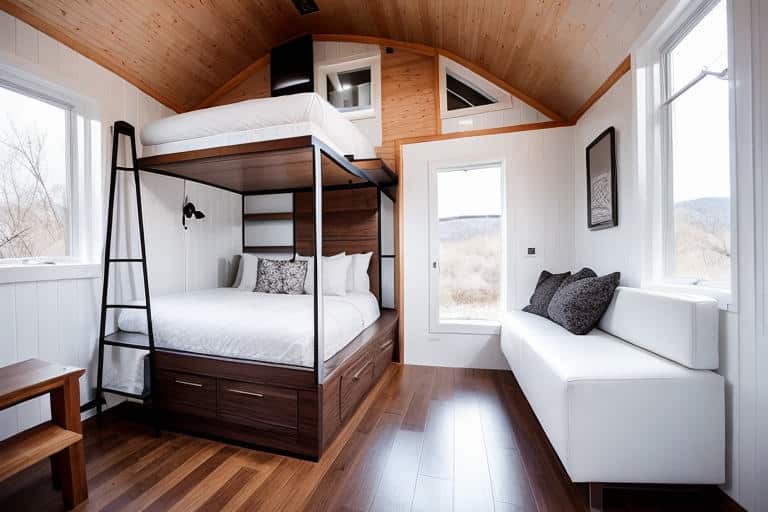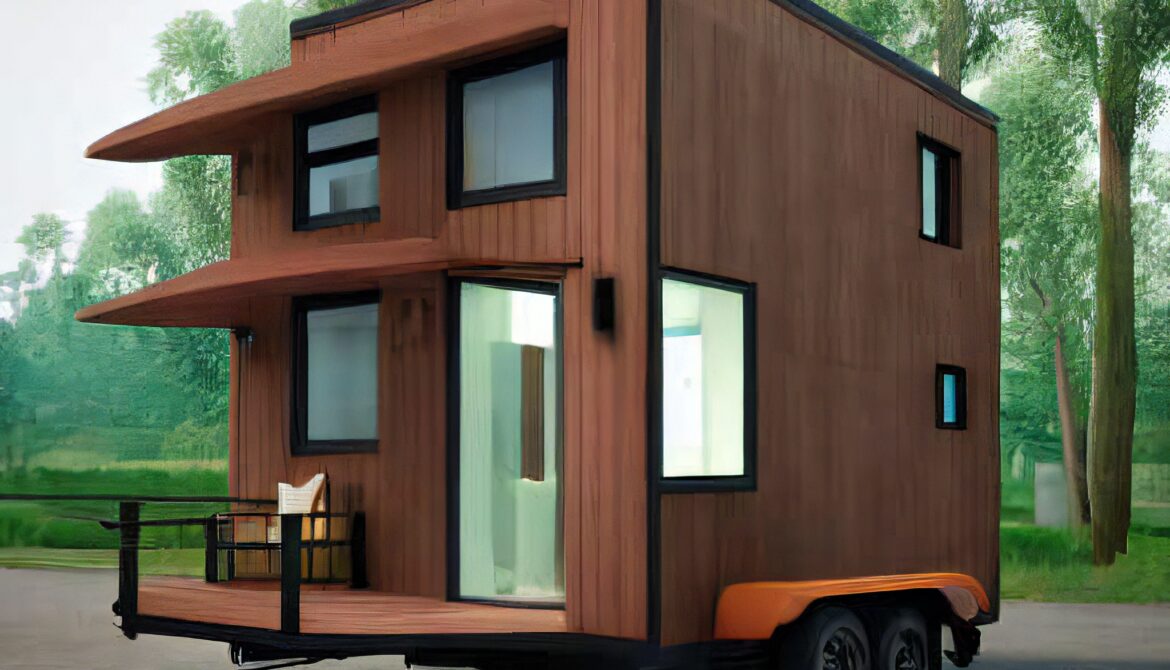Table of Contents
- Introduction
- Definition of Tiny Homes and Minimalism
- Benefits of Tiny Home and Minimalism
- tiny home design tips
- Decoration Tips
- Color Palette
- Use of Rugs
- Hidden Beds/Storage Spaces
Introduction
Tiny homes and minimalism are two concepts that have become increasingly popular in the last decade. Tiny homes are dwellings with a total floor area of 400 square feet or less, while minimalism is a lifestyle choice that encourages people to live with only the essentials and reduce their consumption of material goods. Both tiny homes and minimalism offer numerous benefits, including financial savings, environmental sustainability, and mental health benefits.

Definition of Tiny Homes and Minimalism
A tiny home is a dwelling with a total floor area of 400 square feet or less. They can be built on wheels or on a foundation, and they often feature efficient designs such as lofted sleeping areas and multi-functional furniture. Minimalism is a lifestyle choice that encourages people to live with only the essentials and reduce their consumption of material goods. It emphasizes living with intention by reducing clutter, focusing on quality over quantity, and leading a simpler life.
Benefits of Tiny Home and Minimalism
The primary benefit of tiny homes is financial savings, as they cost significantly less than traditional homes. Additionally, many tiny homes are designed to be energy-efficient which can lead to further savings in utility bills. Minimalism also brings financial savings by reducing spending on unnecessary items. Furthermore, both tiny homes and minimalism promote environmental sustainability by reducing waste production and energy consumption. Finally, these lifestyles can also bring mental health benefits such as improved focus, increased productivity, and reduced stress levels.
tiny home design tips
Tiny homes are becoming increasingly popular due to their affordability and sustainability. most tiny homes are designed with minimalism in mind, which means that they must be carefully planned out and decorated in order to maximize the space available. Here are some design tips for creating a comfortable and stylish tiny home.
Decoration Tips
When decorating a tiny home, it is important to remember that less is more. Choose pieces of furniture and decorations that are both functional and aesthetically pleasing. If possible, opt for multi-functional pieces such as ottomans with built-in storage or wall shelves with hidden compartments. Additionally, look for items that can be easily moved around to create different looks in different rooms of the house.
Color Palette
The color palette used in a tiny home should be kept simple and neutral. Light colors will help make the space feel larger while dark colors can make it feel cozy and intimate. Avoid using too many bright colors as this can make the space feel overwhelming. Instead, opt for muted tones such as blues, greens, grays, and whites.
Use of Rugs
Rugs can be used to add texture and color to a tiny home without taking up too much space. Choose rugs that are light in weight so they can easily be moved around if needed. Additionally, consider layering several rugs on top of each other to create an interesting visual effect while still maintaining a minimalist aesthetic.
Hidden Beds/Storage Spaces
In order to maximize storage space in a tiny home, look for beds or couches that have hidden storage compartments underneath them. This will allow you to store items away without taking up additional floor space in your home. Additionally, consider investing in furniture pieces with drawers or shelves built into them so you can keep items organized without having to purchase additional furniture pieces.
By following these design tips for tiny homes, you will be able to create a comfortable living space that reflects your personal style while also making the most of the limited space available.
Room Dimensions for a Tiny Home Gym
When it comes to designing a tiny home gym, it is important to consider the available space and the necessary equipment. It is possible to create an effective workout space without taking up too much room. Here are some tips for creating a tiny home gym with limited space.
Essential Equipment
The essential pieces of equipment for a tiny home gym include a treadmill, stationary bike, weights, yoga mat, and jump rope. Depending on the size of the area, you may also want to include other items such as an exercise ball or resistance bands. Make sure that all of these items can fit comfortably in the space without overcrowding it.
Optional Additions
If you have extra room in your tiny home gym, you may want to add some optional pieces of equipment like a weight bench or pull-up bar. These items can help you get more out of your workouts and target different muscle groups. However, make sure that these items don’t take up too much room or become an obstacle when exercising.
Safety Measures
When creating a tiny home gym, it is important to take safety measures into consideration. Make sure that any cords or wires are securely fastened so they won’t cause any tripping hazards while exercising. Additionally, make sure that all of the equipment is secure and stable so it won’t move around during use.
Space-Saving Products
There are many products available that can help save space in a tiny home gym. For example, there are wall-mounted treadmills and stationary bikes that fold up when not in use. There are also collapsible weights and mats that can be stored away easily when not needed. By using these products, you can create an effective workout space without taking up too much room in your tiny home gym.
By following these tips for creating a tiny home gym with limited space, you can still get an effective workout even if you don’t have much room to work with. With careful planning and the right products, you can create an efficient workout area without sacrificing your living space!
Repurposing the Attic of a Tiny Home
Tiny homes are becoming increasingly popular as more people embrace minimalism. With limited space, it’s important to make the most of every area in your home. The attic is often overlooked as an area for storage or extra living space, but it can easily be repurposed for a variety of uses.
Easy Maintenance
The attic is usually out of sight and out of mind, so it’s easy to forget about it until you need something from it. However, with regular maintenance, you can keep the attic clean and organized. This includes cleaning the dust and cobwebs that accumulate over time, as well as checking for signs of water damage or pests.
Green Lifestyle
If you’re looking to live a greener lifestyle, the attic is a great place to start. You can use the extra space to store items that you don’t need on a regular basis, such as winter clothes or holiday decorations. This will free up room in other areas of your home and reduce clutter. Additionally, you can install solar panels on your roof to generate energy and save money on electricity bills.
Conclusion
Tiny homes and minimalism offer numerous benefits for those looking to live a simpler, more sustainable lifestyle. The design of a tiny home is essential to making the most of the space available and creating an inviting atmosphere. When it comes to creating a tiny home gym, it’s important to consider the dimensions and necessary equipment for safety and efficiency. Additionally, attics are great spaces for repurposing into living areas that require little maintenance while still offering a green lifestyle.
By following these tips and suggestions, anyone can make the most out of their tiny home or minimalist lifestyle. With careful planning and creative ideas, tiny homes can be transformed into comfortable living spaces with all the amenities desired.


